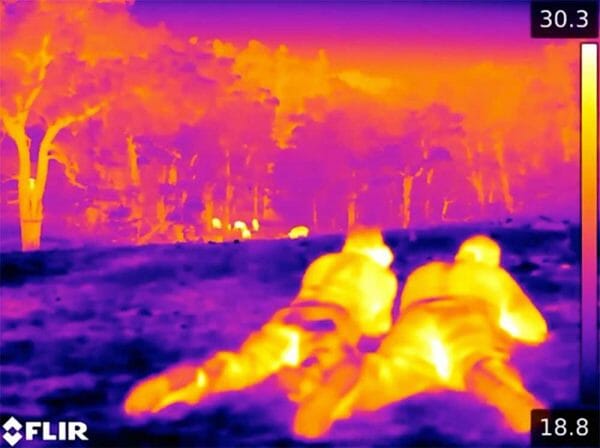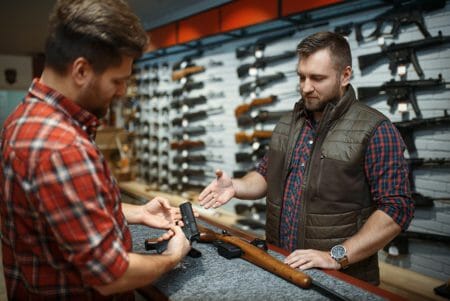
Facing growing coyote populations and rising human-wildlife conflicts, Missouri is considering changes to allow more night hunting options, including thermal imagery and night vision—pending public approval.
The Missouri Department of Conservation (MDC) is currently reviewing public input on a proposed regulatory update that would extend the legal hunting window for these technologies. This change is aimed at helping manage a growing coyote population and mitigate rising human-wildlife conflicts across the state.
Currently, the use of night vision or thermal optics while in possession of a hunting weapon is restricted to a brief window from February 1 to March 31. There is an exception for landowners who use such equipment year-round to control feral hogs on private property. However, the MDC is now considering a substantial expansion of that hunting window—from January 1 through September 30—spanning 252 days. This potential change reflects the increasing need for effective predator management as populations of coyotes and other predators continue to rise.
Local officials report that increased furbearer populations have caused more frequent encounters between coyotes and humans. These encounters include attacks on poultry, livestock, and pets, as well as damage to crops and property. Allowing greater use of thermal and night vision devices could help hunters act as a preventive force, decreasing the instances of predation and mitigating damage in a controlled, legal manner.
A recent 2025 study by the Council to Advance Hunting and the Shooting Sports (CAHSS) revealed strong public support for hunting and recreational shooting across the country. For reference, large majorities of Americans support these activities: 73% approve of legal, regulated hunting, and 74% of recreational shooting.
Thermal imaging and night vision technologies are here to stay. The conceptual basis for thermal imaging emerged in 1800 with William Herschel’s discovery of infrared radiation. Though the practical devices didn’t materialize until the 1930s and 1940s, when military labs in Europe and the United States developed bulky infrared systems for wartime use. Night vision, which initially relied on active infrared illumination, saw its first deployment during World War II and evolved dramatically through the Cold War, improving in range, resolution, and reliability.
By the 1950s, Sweden’s AGA company created the first military thermal imaging camera, and by the mid-1960s, the first commercial infrared cameras appeared for industrial power line inspections. But widespread use remained limited due to cost and complexity.
The 1990s were a watershed moment for the technologies with the advent of uncooled microbolometers, especially vanadium oxide and later amorphous silicon sensors. These compact detectors didn’t require expensive cryogenic cooling, dramatically reducing costs and enabling miniaturization. DARPA’s funding played a pivotal role in pushing the technology toward commercial viability. By 1997, thermal imaging had gone mainstream in industrial diagnostics.
The mass production and adoption of these technologies by the automotive and consumer electronics industries further drove prices down through the 2000s and 2010s. Miniaturization of these technologies continues, with DARPA and private firms developing thermal units small enough for wearable or drone integration. System-on-Chip architectures are simplifying integration, while AI is enhancing pattern recognition and automated alerts.
Civilian demand for thermal and night vision tech is accelerating to say the least. Forecasts show the thermal imaging market could surpass $11 billion by 2032, with night vision expected to follow a similar trajectory.
With regards to the legal use of thermal and night vision for hunting, 10 states—Alaska, Arizona, California, Colorado, Hawaii, Nevada, New Mexico, Oregon, Rhode Island, and Tennessee—have outright banned the use of these technologies in nocturnal contexts.
As public input closes at the end of the month, the question remains whether Missouri will rely on advanced nightscope tools or adhere to daylight only measures.
About José Niño
José Niño is a freelance writer based in Austin, Texas. You can contact him via Facebook and X/Twitter. Subscribe to his Substack newsletter by visiting “Jose Nino Unfiltered” on Substack.com.







Even most lifelong shooters have little night fire scholarship. Because there’s so few places for civilians to acquire it. In the United States, only the carjacker and drive-by shooter perfect night fire.
The problem lays within the title, “Missouri Debates New Night Hunting Options With Thermal Optics”.
If they use thermals and night vision for coyotes, then they must not call it “hunting”. Call it what it is, “vermin control”, as this is simply killing.